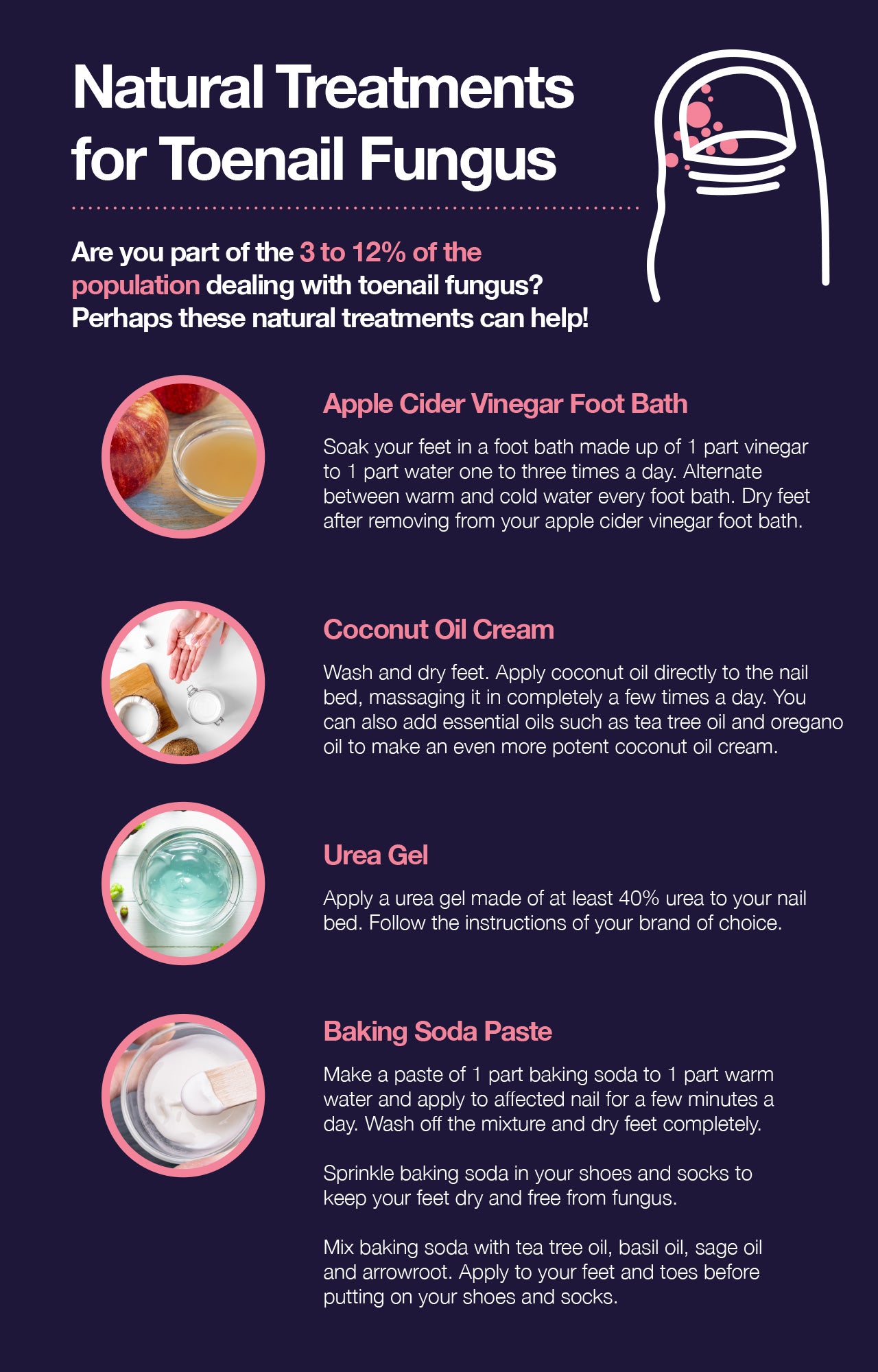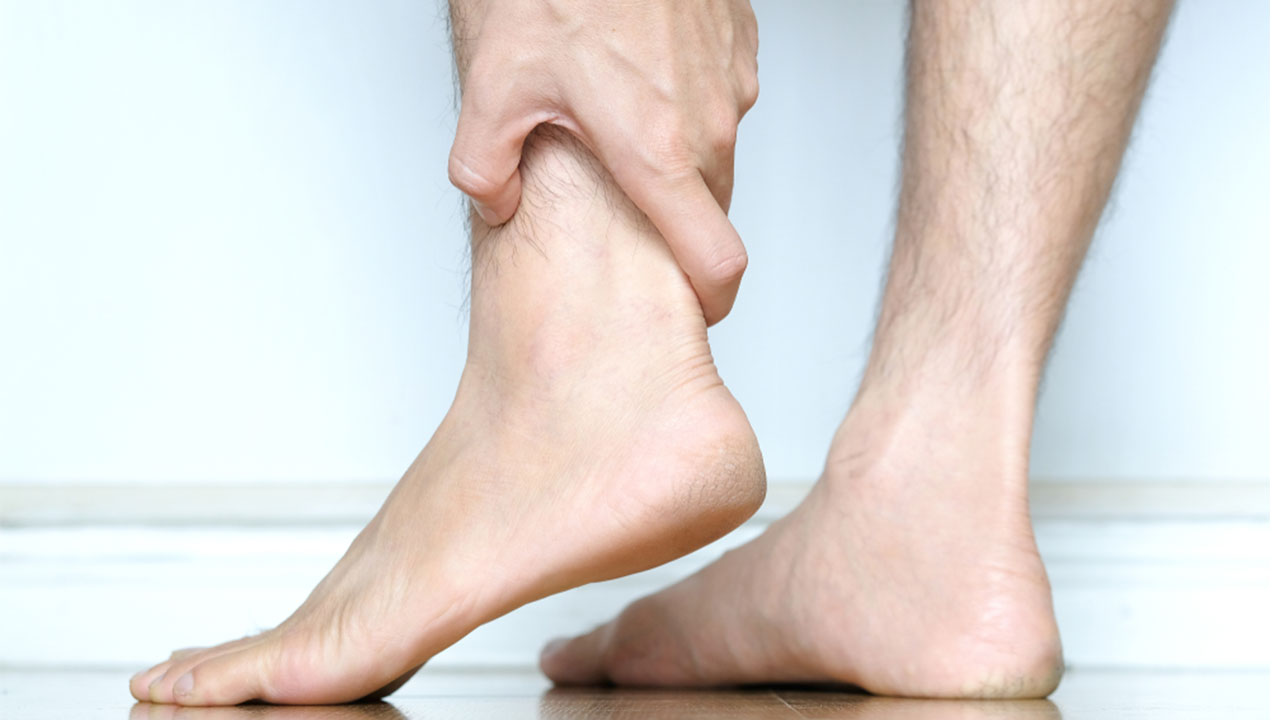Toenail Fungus: What It Is and Why Natural Remedies May Be Your Best Bet
 By: by Amino Science
By: by Amino Science

Toenail fungus is a nagging and unpleasant infection that can grow into an unsightly nuisance. The infection causes discoloration, disintegration, and, sometimes, permanent disfigurement of the nail. Toenail fungus symptoms often include emission of a foul odor from the toenail during clipping. Other toenail fungus symptoms can include a crumbling nail, thickening nail, yellowing nail, or white spots on the nail.
Scientifically referred to as onychomycosis or tinea unguium, the condition is common among seniors but can happen to anyone. People in laborious jobs that cause their feet to sweat a lot, swimmers and gym rats who don’t wear flip-flops in the locker room (which also leads to the skin infection known as athlete’s foot), and others all are at risk. According to a 2014 paper published in the journal PLOS Pathogens, incidence of toenail fungus in North America is about 14%.
Left unchecked by the time it becomes an unsightly nuisance, toenail fungus can become a stigmatized condition. A 2014 study in Hong Kong showed that people with toenail fungus are outcast and believed to be highly contagious. Toenail fungus is contagious, but usually only among people living in close quarters and not wearing protective footwear or in locations such as contaminated swimming pools, gym locker rooms, saunas, and nail salons that use infected tools such as unsterilized nail clippers.
The Hong Kong study was published in the journal Biopsychosocial Medicine. It involved assessing 1,000 surveys sent by email and gathered online. Respondents answered questions based on pictures of toenail fungus.
“Misconceptions of onychomycosis are high and education about the disease needs to be improved,” the researchers concluded. “Early recognition and treatment of the disease is essential to avoid complications and improve treatment outcomes, which would lead to reduced psychosocial impact on those with fungal nail infections.”
Toenail Fungus Causes
Fungi can best take hold on human hosts whose immune systems are compromised, such as the elderly and people living with chronic illness. Leading up to a fungal infection, your nails may show signs of poor health that should be a red flag. They can become discolored or loose, fragile and crumbly. Sometimes they become thicker.
Chronic diseases that have particularly significant impacts on the immune system, such as HIV, diabetes, and peripheral vascular disease, are additional risk factors for toenail fungus. Genetics also can play a role.
Nail conditions go far beyond cosmetic; they indicate something else is wrong inside the body. For many people, it’s simply aging and a compromised immune system. Still, persistent nail problems such as those described here should be discussed with a doctor.
The most common type of fungus infection are dermatophyte infections, which account for 80% of toenail infections, according to a 2008 paper published in the Indian Journal of Pharmaceutical Sciences. The infections often give rise to an unpleasant, cheese-like odor.
Suffice it to say, toenail fungus is a condition most people detest. And, getting rid of it is more difficult than you might think. If you see a health care provider, he or she likely will prescribe an antimicrobial treatment. Surgery and laser treatments also are options but can be expensive.
Many people become aggravated with failed pharmaceutical solutions. The medications can be expensive, and the oral medications can have unpleasant effects. And don’t expect fast results.
“The disadvantages of oral antifungal agents are toxicity and longer treatment period,” wrote Shirwaikar et al in the paper appearing in the Indian journal. “Now, medicated nail lacquers have been developed for the treatment of fungal infections, i.e. onychomycosis, which has less toxicity and shorter treatment periods.”
However, those don’t work well for everyone, either. In fact, toenail fungus is one of the most stubborn skin conditions of all to eliminate. Even when it is eliminated, it often comes back. Toenail fungus also can spread to the feet in the form of athlete’s foot.
In their PLOS Pathogens paper titled “Fungal Nail Infections (Onychomycosis): A Never-Ending Story?” Ghannoum et al, declared, “The treatment of (toenail fungus) has improved considerably over the past several decades, following the introduction of the oral antifungals terbinafine and itraconazole. However, these drugs may have side effects such as liver damage or drug interactions, which are particularly relevant in the elderly population.”
And, of course, the elderly are most at risk for toenail fungus. So, this presents a problem.
Best Toenail Fungus Treatments
Natural remedies, including everyday items such as apple cider vinegar and coconut oil (and the important fungus-fighters inside of them), may be your best bets for toenail fungus relief.
Oral therapies simply have proven too complicated for many patients. Either they aren’t very effective, or they interact with other commonly used prescription drugs.
Over-the-counter creams often don’t work (or don’t work very well) because it’s tough for a cream medication to penetrate beyond the surface of the nail. That’s why it’s so important to file the unhealthy nail away as much as possible. It may be a bit uncomfortable, but it will allow the medication to work properly.
Toenail lacquers made of antifungal agents and applied as nail polish can be effective at fighting and also preventing toenail fungus, but the treatment can become lengthy and expensive. Let's take a look at Mother Nature's most potent topical treatments for toenail fungus.

Apple Cider Vinegar
Why apple cider vinegar? It is highly acetic due to the acetic acid it contains, which makes it difficult for the fungi to survive. Apple cider vinegar also is available in supplement form, such as capsules.
There haven’t been any clinical trials on humans or even any animal research evaluating whether apple cider vinegar is a viable treatment option for toenail fungus. However, there is some research that points to a possible explanation for the popular home remedy.
In a test tube, scientists showed that when organic acids such as acetic acid (found in apple cider vinegar) were removed from certain antifungal nail products, they stopped working. The paper, published in the journal Mycoses, concluded, “These results suggest a role for organic acids in the antifungal effect of Excilor (acetic acid, ethyl lactate) and Nailner (lactic acid, citric acid, ethyl lactate) as all tested formulations without organic acids were inactive.”
Coconut Oil
What evidence is there showing coconut oil will help heal toenail fungus? Coconut oil contains medium-chain fatty acids such as caprylic acid, and therein lies its power.
Places where coconuts thrive—warm, tropical (moist) locales—happen to be where fungi thrive, too. That includes your nails, be those on your toes, sweating all day in shoes and socks; or on your fingers, working and getting germy all day long. Ironically, however, people who live in tropical locales tend to not get toe fungus. That’s because most of the time they are wearing sandals without socks, so their feet don’t sweat.
To take advantage of the antifungal powers of coconut oil, melt down a bit of the oil and apply directly to the affected nail.
Medium-Chain Fatty Acids
Medium-chain fatty acids contain antimicrobial-fighting powers that help keep onychomycosis at bay. A 2013 study published in the International Journal of Biomedical Research revealed a scientific method called DIMOSFER (direct modification of substrate through fermentation) that makes coconut oil’s bacterial-fighting powers even more potent. The Malaysian researchers demonstrated the oil showed particular aggression against staphylococcus aureus and Escherichia coli infections.
The caprylic acid in coconut oil is believed to fight fungal infections brought on by yeast, or candida. A study published in the Journal of Medicinal Foods showed how capric and caprylic acid shut down cell pathways needed for fungus to form.
“This research suggests that both capric and caprylic acid may be effective interventions for treating C. albicans yeast infections,” the authors concluded.
Caprylic and capric acid also can be taken orally in supplement form.
Urea
It may sound like fighting fire with fire—extinguishing the fungus on your feet with urea.
Yes, urea, as in the ammonia found in your urine. It can be toxic to toenail fungus, and also works in tandem with other antifungal medications.
“Numerous studies have shown combination therapy of urea and an antifungal agent to be an effective treatment for onychomycosis,” writes Dr. Kristine Hoffman in a piece published online at Podiatry Today. “Urea functions to soften the nail plate, which can enhance the passage of antifungal medications to the underlying nail bed.”
You can apply a urea gel such as Bare Urea Gel containing 40% urea to your infected nails.
Baking Soda
Baking soda hasn’t been shown to cure toenail fungus, but it may help prevent it. Note: Don’t mix baking soda with apple cider vinegar when treating toenail fungus. The baking soda lessens the acidity of the apple cider vinegar, which defeats the purpose.
Baking soda helps prevent toenail fungus by keeping your feet dry. In addition to the treatment of onychomycosis, baking soda is good for use in scrubbing dead skin off the toes and feet.
In a case study published in the journal International Society of Sports Nutrition, a researcher mixed baking soda with arrowroot and the essential oils basil oil, tea tree oil, sage oil, and clove oil to inhibit bacterial growth on sweaty feet covered by socks.
“Application of this novel compound to the external surfaces of feet completely inhibited both aerobic bacteria and yeast-fungi-mold proliferation for 8 hours in spite of being in an enclosed environment compatible to microbial proliferation,” the author concluded, calling for larger, similar studies.
Until pharmacological and other treatments for toenail fungus can be perfected, nature’s treasure trove is a great place to seek relief from this often unsightly condition. However, if your toenail fungus persists despite your natural efforts, seek medical advice from a health care professional.
It's always a good idea to support your health with a daily dose of essential amino acids to help keep your immune system strong and fight against pesky annoyances like viruses and fungi!

Up to 25% off Amino
Shop NowTAGS: conditions natural cures
Join the Community
Comments (0)
Most Craveable Recipes




 833-264-6620
833-264-6620



















